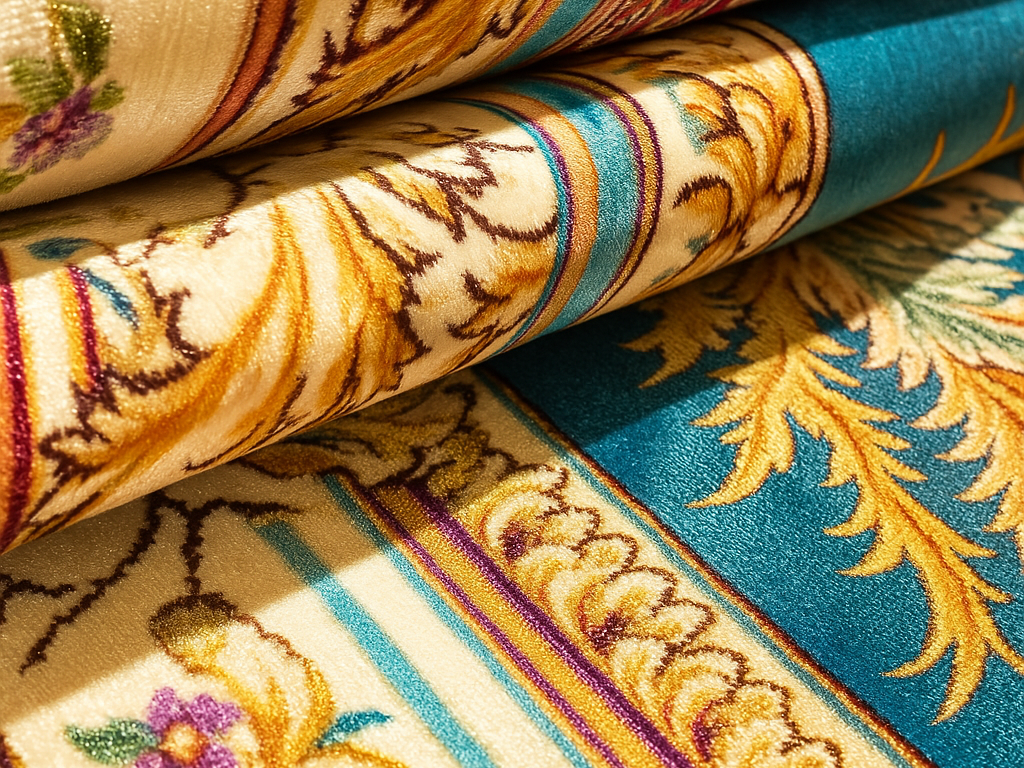If you’re looking for a rug that combines durability, comfort, elegance and long-term value, then wool is very hard to beat. At Valhak, we believe in investing in quality—and choosing the right material is a first step. In this article we’ll explore in depth what makes wool such an exceptional choice for area rugs. I’ll walk through its unique characteristics, how it compares to other fibers, what to look for when buying, and how to care for it so your rug stays spectacular for many years.
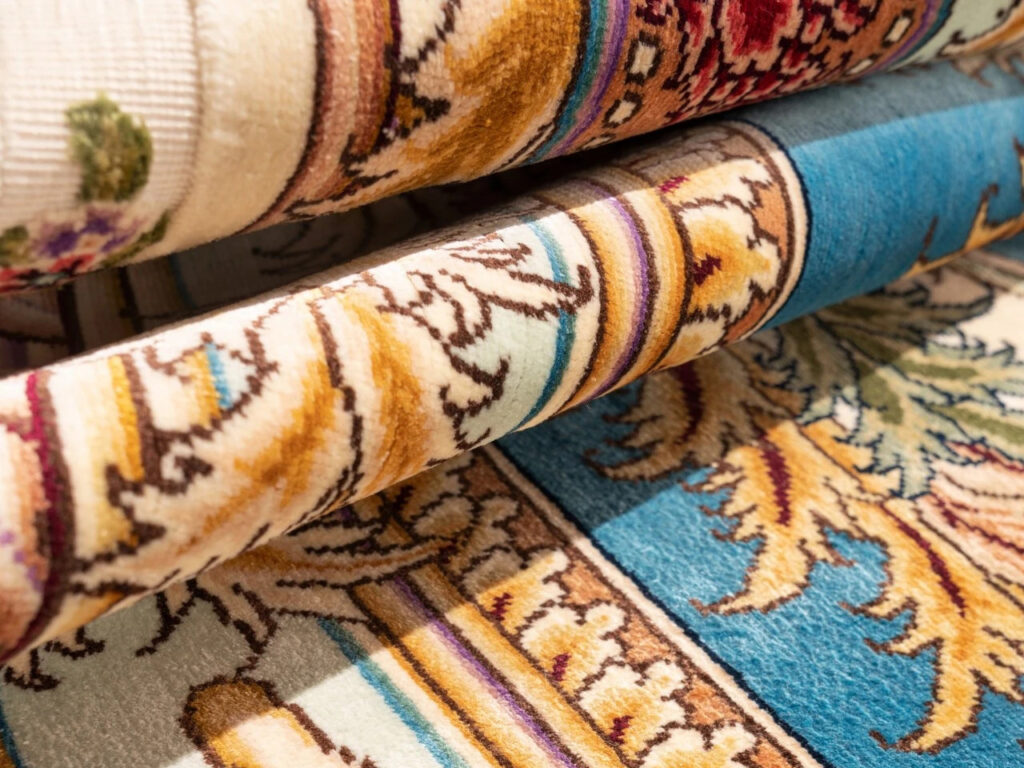
1. What is wool—and how does it come into rugs?
Wool, in the context of rugs and floor coverings, is typically the fleece obtained from sheep, spun into yarns, and then used as the pile (and sometimes the foundation) of an area rug. Because it is a natural, renewable fibre, it carries many of the intrinsic qualities of natural materials.
When wool is carefully spun and woven (or tufted) into a rug, it produces a piece that is both tactile and robust. Rug-industry references describe wool as “a timeless favourite known for its softness, strength, and eco-friendly credentials”.
It’s worth noting: because it’s natural, wool varies in quality (breed of sheep, region, processing, spinning) which means that one wool rug may behave quite differently than another. Understanding the fibre is important.
2. The key advantages of wool for area rugs
Here are the main reasons why wool stands out as a material for area rugs—and why, at Valhak, we often choose it.
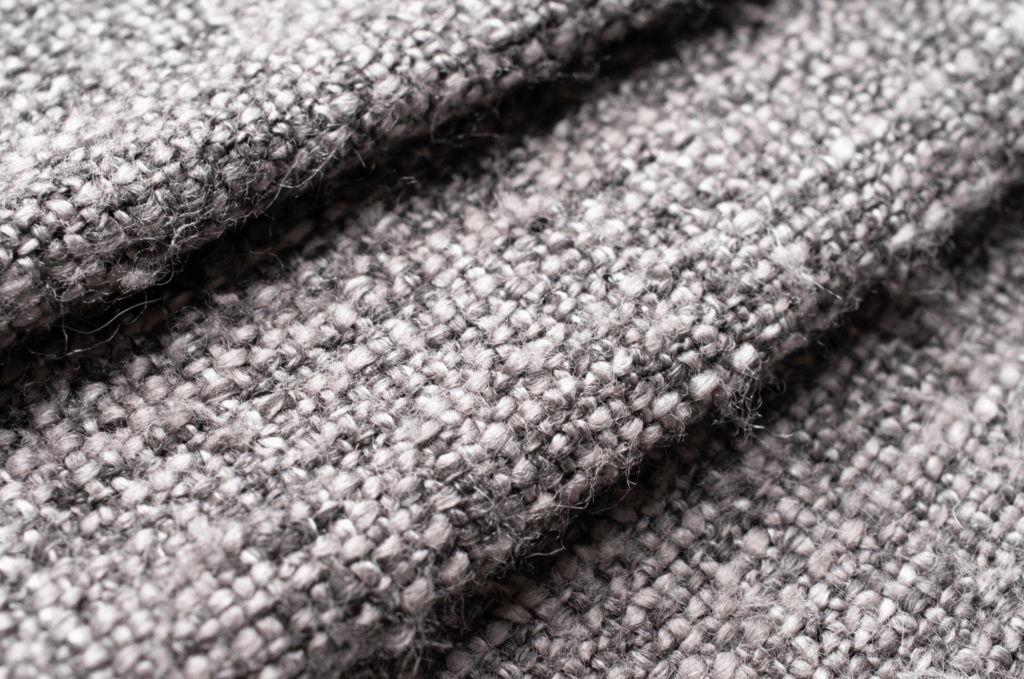
A. Comfortable, luxurious feel
Wool is inherently soft and warm underfoot. It has a natural “bounce” or resilience which gives it a welcoming plushness. As one guide puts it: “Wool carpets are crafted from natural fibres … renowned for their softness, durability, and eco-friendly nature.”
That tactile quality is a real luxury. Many homeowners say that the step onto a wool rug feels more “grounded”, more comfortable, than stepping onto synthetic-made rugs.
B. Durability and resilience
Beyond just feel, wool has strong performance credentials. It resists crushing (so the pile doesn’t flatten as quickly), bounces back, and holds its appearance over time. In carpet comparisons:
“Wool is a super strong and natural carpet material that will last notably longer than synthetics.”
So if you’re investing in a rug that you hope will still look good in 10 or 15 years, wool is a material that supports that goal.
C. Natural stain / soiling resistance
Wool fibres contain natural oils (lanolin among them) and the physical structure of the fibre means it tends to repel certain liquids and resist soil penetration better than many synthetics. A rug-industry discussion notes that wool rugs are “naturally stain-resistant”.
What this means in practice: spills may sit on the surface longer before penetrating, giving you more time to blot and clean. The result is a rug that can age more gracefully.
D. Insulating properties — heat, sound and moisture
Wool acts as a good thermal insulator. It helps in cooler seasons to hold warmth, and in warmer seasons it helps moderate the feel of the floor. Some sources highlight that wool rugs help regulate temperature and humidity.
From an acoustic standpoint, a dense wool pile also absorbs sound better than many thin synthetic rugs. For homes with wood or tile floors, the difference can be quite tangible.
E. Eco-friendly credentials
For customers who care about sustainability, wool checks many boxes. It is a renewable resource, biodegradable, and when sourced and processed responsibly, has a lower environmental footprint than many petroleum-based synthetic fibres. For example:
“For those who value sustainability, wool is a natural, renewable material. It is biodegradable …”
Given the growing consumer interest in sustainable home goods, wool is aligned with that expectation.
F. Timeless aesthetic and value
Wool rugs often carry an air of craftsmanship and authenticity. Because of their longevity and natural fibre basis, they tend to “age well” visually and structurally. One flooring specialist simply states: “Wool is a smart investment for those who want a timeless rug that improves with age.”
From a brand like Valhak, where we want to deliver value over time, that makes wool especially appealing.
3. Where wool may have limitations (and how to address them)
No material is flawless, and wool has a few considerations that are worth keeping front of mind. Let’s explore those—and how you or your customer can mitigate them.
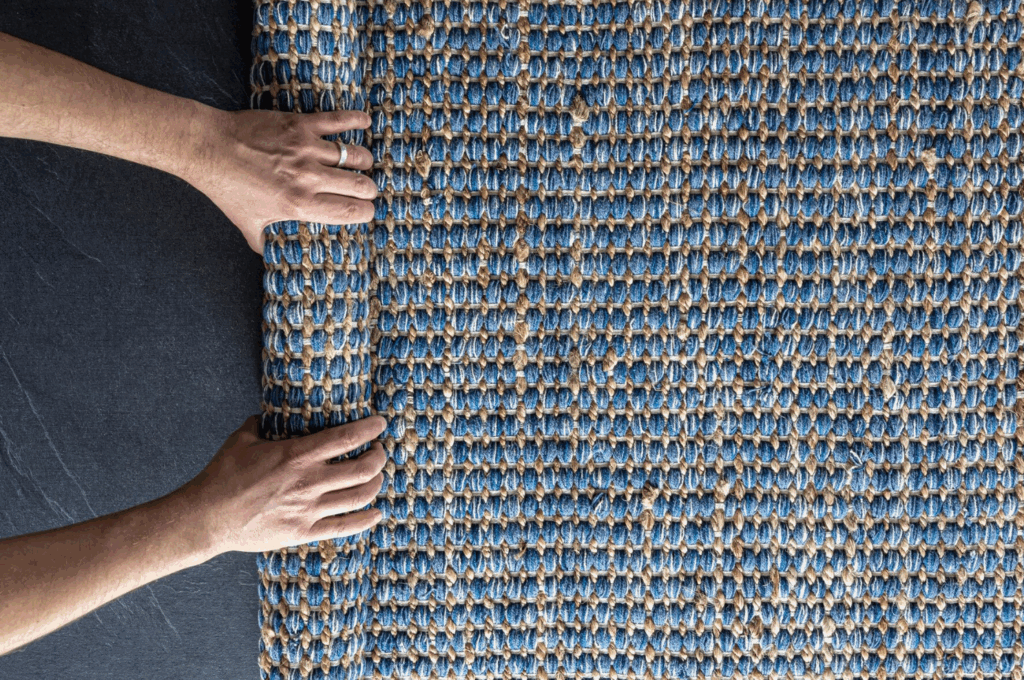
A. Higher initial cost
Because wool is a premium natural fibre, and because quality processing and weaving increase production cost, wool rugs usually carry a higher upfront price than many synthetic fibre alternatives. As one comparison states: “The higher price tag will need to fit your budget.”
If you’re selling or buying, it’s important to frame this as a long-term investment rather than a short-term bargain.
B. Moisture sensitivity
Wool absorbs moisture more than many synthetics. In damp or humid spaces (basements, bathrooms, very humid climates) this may lead to curling, mildew, or damage if the rug is not properly ventilated. Several sources caution that wool rugs are “less ideal for very humid or wet areas”.
Mitigation: Use wool rugs in living rooms, bedrooms, or halls rather than bathrooms or outdoor spaces. Ensure appropriate rug pads, ventilation, and avoid placing wool in damp zones.
C. Shedding and initial maintenance
When new, some wool rugs may shed loose fibres. This is more common with hand-tufted or hand-knotted pieces and tends to reduce over time. One website notes that wool rugs “may shed initially, especially when new.”
Mitigation: Advise customers to vacuum regularly with a suction-only head (no rotating brush) for the first few months, and to handle shedding as part of the break-in process.
D. Maintenance and cleaning expectations
Because wool is natural, it may require slightly more thoughtful maintenance compared to one or two of the high-performance synthetics. For instance, avoiding harsh chemical cleaners, blotting spills quickly, and employing professional cleaning when needed. Some sources note that “regular cleaning and care” are required to keep wool carpets looking their best.
Mitigation: Educate buyers on maintenance best practices (which we’ll cover in section 6 below).
E. Not the best for extreme high-moisture or outdoor environments
If durability in a garage, patio or an extreme spill-prone space is the priority, some synthetic rugs may outperform wool in those niche contexts. One blog post says: “Use wool in drier areas. Avoid using it in moisture-prone spaces.”
In short: wool is excellent—but like any material, the context matters. Ensuring you recommend the right material for the right room is a hallmark of good service.
4. How wool stacks up against common alternative rug materials
To fully appreciate wool, let’s compare it with some of the other materials you’ll frequently encounter in the rug market. Understanding the trade-offs helps in positioning wool as the premium offering and helps customers make informed decisions.
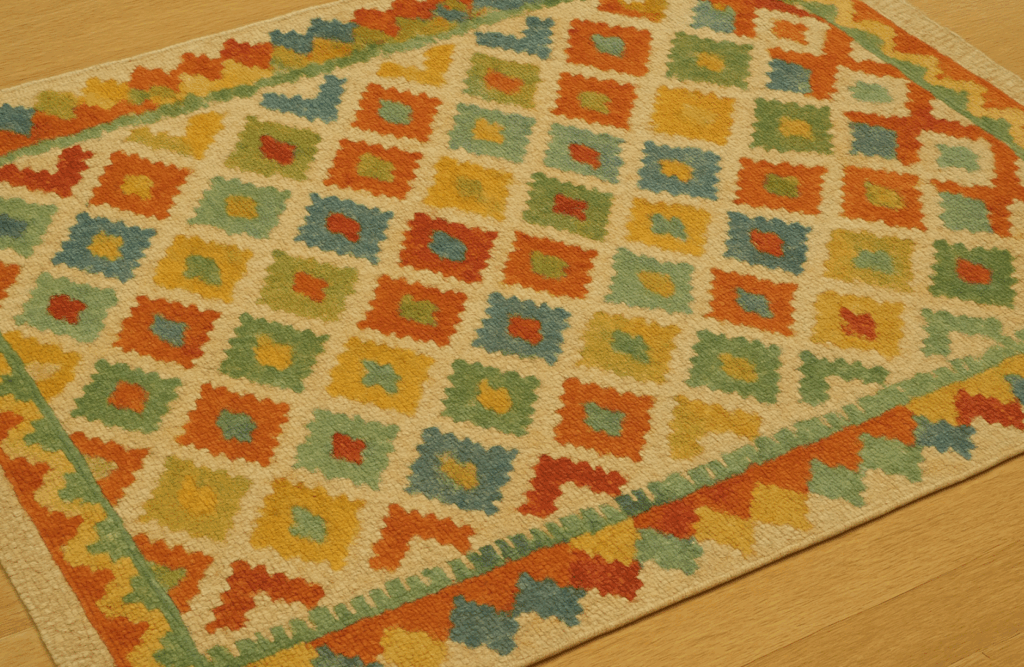
Wool vs. Synthetic Fibres (nylon, polyester, polypropylene)
- Durability / lifespan: Wool tends to last longer, with better resistance to pile crushing and flattening. Many synthetics have good durability but may show wear sooner.
- Feel and comfort: Wool offers a more natural, warmer feel underfoot; many synthetics cannot quite replicate that plushness.
- Stain / soil resistance: Some synthetics (especially polypropylene) are engineered for stain resistance. Wool has natural resistance but may require more prompt care if spills occur.
- Moisture / damp resilience: Synthetics generally fare better in humid or wet zones—wool can absorb moisture and may be more at risk in damp environments.
- Eco / sustainability: Wool clearly leads as a renewable, biodegradable resource. Synthetics derive from petrochemicals, though some recycled versions exist.
- Cost: Synthetics typically cost less; wool is the higher-end investment.
Key takeaway: If a buyer prioritises budget and low-maintenance (particularly in a high-traffic, high-spill area), a synthetic might make sense. But if they prioritise comfort, longevity, aesthetics and sustainability, wool is often the better choice.
Wool vs. Natural Plant Fibres (jute, sisal, cotton)
- Texture / feel: Plant-fibre rugs (sisal, jute) tend to carry a rougher texture—stylish and natural, but not always plush underfoot. Wool offers a softer, warmer experience.
- Durability / traffic suitability: Wool is typically stronger for high-traffic spaces; plant fibres may show wear more quickly.
- Maintenance: Plant-fibre rugs may be more prone to soiling and can feel less comfortable; wool offers a stronger all-round performance with that luxury component.
- Aesthetic / décor role: Plant fibres are often used for accent rooms, layering, or natural/bohemian looks. Wool covers a broader range—from casual to formal and everything in between.
Key takeaway: Plant-fibre rugs are an option if you want a natural, textural accent and are okay with less plush feel and possibly more visible wear. For a main area rug that functions and delights over time, wool is stronger.
5. Why Valhak chooses wool (and why you might too)
At Valhak we design and curate area rugs with the understanding that a rug should do more than simply ‘look nice for a year’. It should become part of the space, survive normal use, deliver comfort underfoot, and retain its value visually and physically.
Here are the reasons we lean into wool:
- Premium feel: We want our rugs to elevate a room—not blend in. Wool gives that elevated tactile experience.
- Longevity: We want our customers to come back years later and still see the rug retaining its form and presence. A high-quality wool rug is much more likely to perform that way.
- Eco-consciousness: As awareness grows, we recognise customers care about materials. Offering wool carpets aligns with that deeper value.
- Versatility of design: Wool takes dyes beautifully, holds pattern and texture, and works across styles — modern, classic, transitional.
- Value proposition: Yes, the upfront cost may be higher, but when you consider lifespan, retained appearance, and satisfaction over time, wool often delivers better ROI.
From a sales and marketing perspective, when you communicate the advantages of wool clearly and honestly — including its premium positioning and care expectations — customers appreciate the transparency and feel confident in their investment.
6. How to choose a wool area rug (and what to look out for)
Selecting the right wool rug means more than just seeing “wool” on the label. Here are practical tips for you (and your customers) to get the most value.
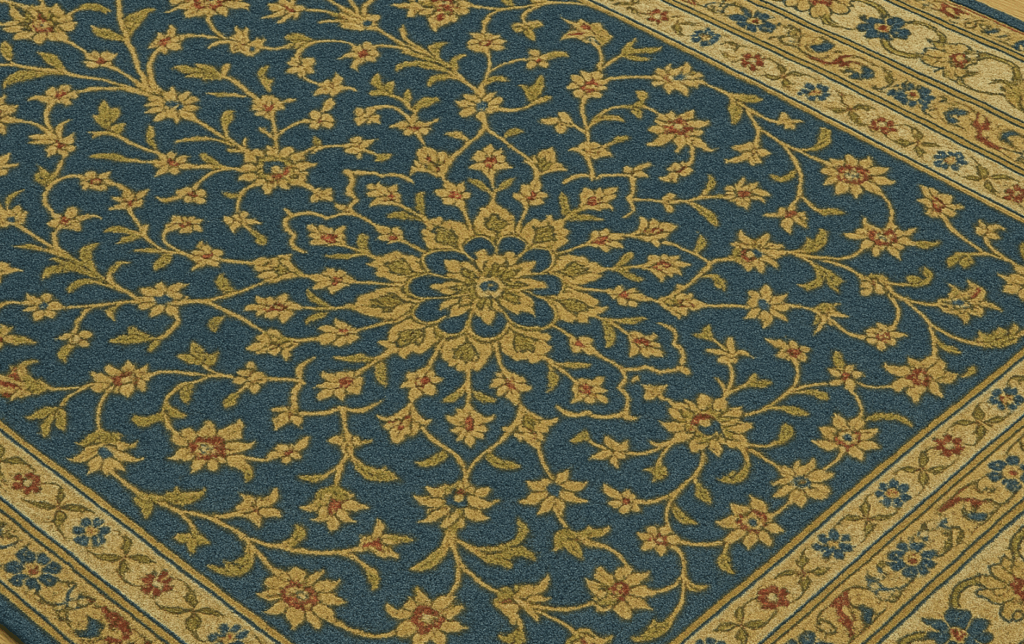
A. Check the fibre content
- 100% wool pile is ideal (or a high percentage) rather than a heavy blend with synthetic fibres.
- Look for terms like “New Zealand wool”, “Merino wool”, or “premium sheep wool” if specified. These may come at a premium but often deliver higher quality.
- Ask about dying and finishing: good wool yarns dyed properly will hold colour and not bleed or fade excessively.
B. Assess the density / construction
- A rug that feels dense (you can see the pile is thick; when you push it you feel resistance) is more likely to hold up.
- Check the backing and weave: good foundations support longevity.
- If it’s hand‐knotted or hand‐tufted, check for uniformity, tightness of knots/tufts.
C. Pile height and finish expectations
- High-pile wool rugs are plush and luxurious but may be harder to clean and better suited to lower-traffic rooms.
- Lower-pile wool rugs may be more practical for living rooms or spaces with moderate foot traffic.
- The rug pad is just as important: for wool rugs, a good pad helps longevity, maintains shape, and supports comfort.
D. Match to room and lifestyle
- Consider traffic: living room vs bedroom vs entryway. Wool is excellent for living rooms/bedrooms; for very high traffic or spill-prone zones you may need an especially durable finish.
- Consider climate: if you live in a high-humidity zone (e.g., some parts of L.A., coastal California) ensure there’s good ventilation and perhaps avoid using wool in a basement or damp area.
- Consider pets/kids: while wool is durable and stain-resistant, no rug is “indestructible”. Educate customers about care (we’ll talk more next section).
E. Verify brand, quality guarantee and after-sales
- Ask the manufacturer or retailer: what is the expected lifespan or guarantee? Are there any warrantees on wear or pile crushing?
- Understand the cleaning policy: wool rugs may benefit from professional cleaning every few years — include this in the cost/maintenance conversation.
- Make sure the brand (like Valhak) stands by its product: full disclosure on fibre content, origin, manufacture.
By following these steps you ensure the wool rug is not just “a wool rug” but a valuable wool rug — one that fulfils premium expectations.
7. Care & maintenance for wool area rugs
Owning a fine wool area rug comes with great benefits—and modest responsibilities. Caring for it well helps maintain beauty and extend lifespan.

Daily / weekly maintenance
- Vacuum regularly (once or twice a week) using a suction-only head (no rotating brush if the pile is long/thick) to avoid damage to the fibres.
- Rotate the rug every 6–12 months so that wear is evenly distributed (especially if part of the room is more exposed to sunlight or heavy foot traffic).
- Use a quality rug pad underneath: this prevents slipping, absorbs shock, supports the pile, and helps with insulation.
Dealing with spills and stains
- Blot spills immediately: don’t rub. Use a clean, white cloth to absorb as much liquid as possible.
- Use mild soap and water or a wool-cleaning solution recommended for wool fibres. Avoid harsh chemicals or bleach. One article says: “Spot-clean promptly”.
- Avoid over-wetting: wool absorbs moisture and if too wet may lead to backing damage or mildew.
Deep cleaning
- Professional cleaning every 2–5 years (depending on traffic) is advisable—for a high-quality wool rug.
- When cleaning at home, ensure proper dry time and good ventilation.
- Avoid steam cleaning if the manufacturer advises against it (some wool rugs may shrink or distort).
Addressing shedding / “fibre migration”
- Some shedding is normal in new wool rugs. One user on Reddit wrote:
- “Wool is much easier to vaccum … I’ve had two synthetic rugs and both were practically impossible to vaccum.”
- For the first few months, increase vacuuming; after that, shedding should reduce significantly.
- If you see loose fibres, simply vacuum gently; don’t use a beater bar or harsh brush.
Avoiding direct sun / extreme conditions
- Direct sunlight for long hours may fade wool colours over time. Use drapes/blinds or rotate the rug periodically.
- Avoid placing in very damp or humid areas without proper ventilation (as discussed above).
- For high-traffic or heavy-furniture zones, consider using coasters or furniture pads to reduce indentations.
With proper care, a wool area rug can remain a focal point of a room for many years, continuing to deliver both style and function.
8. Real-world scenarios: When wool is the smart choice
To help you, and your customers, visualise how wool performs, here are a few real-world scenarios where choosing wool is particularly smart:
Scenario A: Living room in a modern home
You have a contemporary living space with moderate to high traffic, occasional guests, and value comfort underfoot (barefoot on tile/wood). You want a rug that “feels like home” but also holds up. A wool rug provides the plush comfort while offering durability.
Scenario B: Master bedroom retreat
Here your priorities are comfort and “cozy underfoot”. You might step out of bed onto the rug each morning. The plushness of wool, along with its insulating warmth, makes it a natural fit.
Scenario C: Formal dining room / less-used area
In a less trafficked area where aesthetics and longevity matter more than budget constraints, wool shines. You may invest a bit more because the rug is part of the room’s design statement.
Scenario D: High-end rental or luxury property
If you are outfitting a property for long-term value (say, an upscale rental or a boutique lodging space), selecting wool helps you deliver premium feel and longevity—reducing the need for frequent replacement.
Scenario E: Eco-conscious interior design
A customer is purpose-driven, wants renewable materials, cares about sustainability, and wants pieces that last—not disposable design. Wool delivers strong credentials in this respect.
In each of these cases, wool is not just a “nice to have” but a strategic material choice. At Valhak, aligning our rug offering to those use-cases helps elevate the perceived value and build customer trust.
9. How to communicate the value of wool rugs to customers
When marketing or discussing wool rugs, here are some key talking points that resonate with buyers—especially when done in a clear, honest way.
- “Investment, not just decoration”: Emphasise that while the upfront cost may be higher, the lifespan, tactile comfort, and maintained appearance mean the cost per year/use is lower.
- “Feel the difference”: Encourage customers to experience the plushness and warmth of wool underfoot—it’s a sensory benefit.
- “Natural, sustainable choice”: Highlight wool’s renewable and biodegradable nature; for many customers this is becoming a differentiator.
- “Better over time”: Explain how wool resists flattening, holds its texture, and may look better after years than a lower-cost synthetic.
- “Proper placement matters”: Be transparent about limitations (e.g., not ideal for a very moist basement) but also explain that when placed correctly, wool delivers exceptional performance.
- “Maintenance = payoff”: Reassure that while wool needs care, it’s not onerous—and that the result is a rug that continues to look great.
- “Design versatility”: Show examples of wool rugs in different styles—modern, traditional, minimalist, luxurious—as that helps customers see it meets both aesthetic and functional needs.
By framing wool not just as “good material” but as a smart choice for long-term living, you help customers feel confident. That builds brand trust for Valhak and improves customer satisfaction in the long run.
10. Conclusion
Selecting the right material for an area rug is a decision that impacts not only how a space looks today—but how it feels tomorrow, how it performs under foot traffic, how it carries out wear, and how satisfying the investment becomes. Wool stands out as a material that ticks many of the right boxes for homeowners and decorators alike. At Valhak, our commitment to craftsmanship and long-term value leads us to feature wool in our premium rug lines, and when customers take the time to understand its advantages, we find they make smarter choices—and enjoy the rugs for years.
Thank you for reading. If you’re exploring wool rugs and want help selecting the right size, weave, colour, or coordinating décor, we’d be happy to help.
11. FAQs
Q1: Are wool rugs difficult to maintain?
A: Not particularly difficult—but they do benefit from regular vacuuming, prompt spill-treatment, and occasional professional cleaning. Proper care prolongs life and appearance.
Q2: Can a wool rug be used in a high-traffic area like a hallway or living room?
A: Yes—if the rug is of high quality, well constructed and placed in a suitable (dry) environment. Wool is durable and handles foot traffic well.
Q3: Is wool safe for homes with pets and children?
A: Generally yes. Wool is naturally stain-resistant and resilient. However, it’s still a good idea to act quickly on spills and provide extra care in homes with heavy pet usage or frequent messes.
Q4: How does the cost of a wool rug compare with synthetic alternatives?
A: Wool rugs typically cost more up‐front than many synthetics. But because they last longer and maintain their appearance better, the cost over time can be lower.
Q5: What are the signs of a good quality wool rug?
A: Look for 100% wool pile, dense construction, tight weave or tufting, good backing/foundation, and a brand or manufacturer that offers clear information about fibre origin and care instructions.

